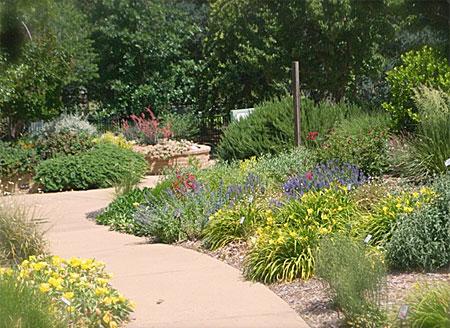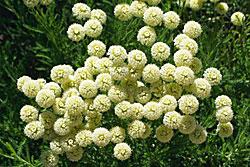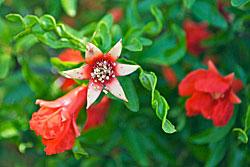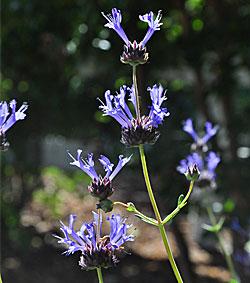Water-Efficient Landscape Gardens in June
Home » Fair Oaks Horticulture Center » WEL Gardens » June in the WEL
The WEL gardens at the Fair Oaks Horticulture Center are open to the public seven days a week from sunrise to sunset for self-guided tours.
Wheelchair accessible, the gardens feature natives, commonly available perennials, trees, shrubs, and plants from other Mediterranean climates that do well with less water during our long, hot, dry summers and tolerate our chilly, damp Sacramento County winters. Most plants are labeled and many are UC Davis Arboretum All-Stars. The landscape demonstrates how home gardeners can be smart about using the water we have to create beautiful landscapes. (For more information see Gardening with Limited Water.)

Click here for resources about gardening with limited water.
Although the calendar says summer arrives June 21 our early June weather feels like we are in midsummer now. The garden is definitely trying on it’s summer wardrobe. Many of our ornamental grasses are starting their long lasting bloom cycles as fresh yellow, green and pink flower heads dry and fade to golden browns that catch the light and shimmer as accents and background screens. Fresh blossoms of summer flowering sages, goldenrod, hummingbird plant, and santolina (and more…come visit!) delight the eyes and beckon birds, bees and other beneficials. Occasionally, we are able to spot a ‘Big Orange Bee’ or BOB, the amber colored, non-stinging, green-eyed male Valley carpenter bee, also known as a ‘Teddy Bear’ bee. See information about attracting beneficial insects to your garden (PDF 171kb).
Garden chores this month include weeding out newly germinating annual weeds such as bedstraw, spotted spurge, and oxalis before they set seed, controlling bindweed and pulling up oak and other tree sprouts while watching out for garden pests and diseases. (A good guide to identifying and controlling weeds can be found at http://www.ipm.ucdavis.edu/PMG/weeds_all.html).
In addition to the plants, pathways, patios, raised planters, drip irrigation, a dry creek bed and permeable pavement demonstrate water wise, sustainable alternatives for gardeners who are considering replacing or reducing their lawns.

|
Eriogonum umbellatum var. polyanthum This native of Northern California mountain areas adapts well to our climate and soil. It grows as a mounding small semi-evergreen subshrub 1-1/2 feet tall to 3 feet wide. The bright yellow pom-pom like spring blossoms dry to a long lasting sulfur colored seed head. It can tolerate some shade and prefers good drainage. |

|
Punica granatum ‘Nana’ Pomegranates, natives of Northern Africa, Afghanistan, Iran, and the Himalayas, have been in California since the 1770s. Featured at the entrance to our commonly available garden, this dwarf variety blooms from spring to fall. Small fall ripening fruit is primarily decorative. Mostly evergreen here, it will lose its leaves if frosted. Tolerant of many soil types including alkaline soils, as well as heat, cold, and drought tolerant, it makes a good foundation shrub, hedge, accent or small tree. ‘Nana’ grows to 3 feet high by 6 feet wide. |

'Winnifred Gilman'
|
Salvia clevelandii ‘Whirly Blue’, Winnifred Gilman’ These California native, sun loving, small evergreen shrubs grow 3 to 5 feet tall and 5 to 8 feet wide. Brilliant blue-violet flower whirls on maroon colored stems appear from spring to early summer. Flowers invite hummingbirds, butterflies and beneficial insects to visit, and make attractive dried flowers. A member of the sage family, it has an easily recognized aromatic fragrance when the leaves are bushed lightly. Heat and drought tolerant once established. ‘Winnifred Gilman’ is a UC Davis Arboretum All-Star. |



